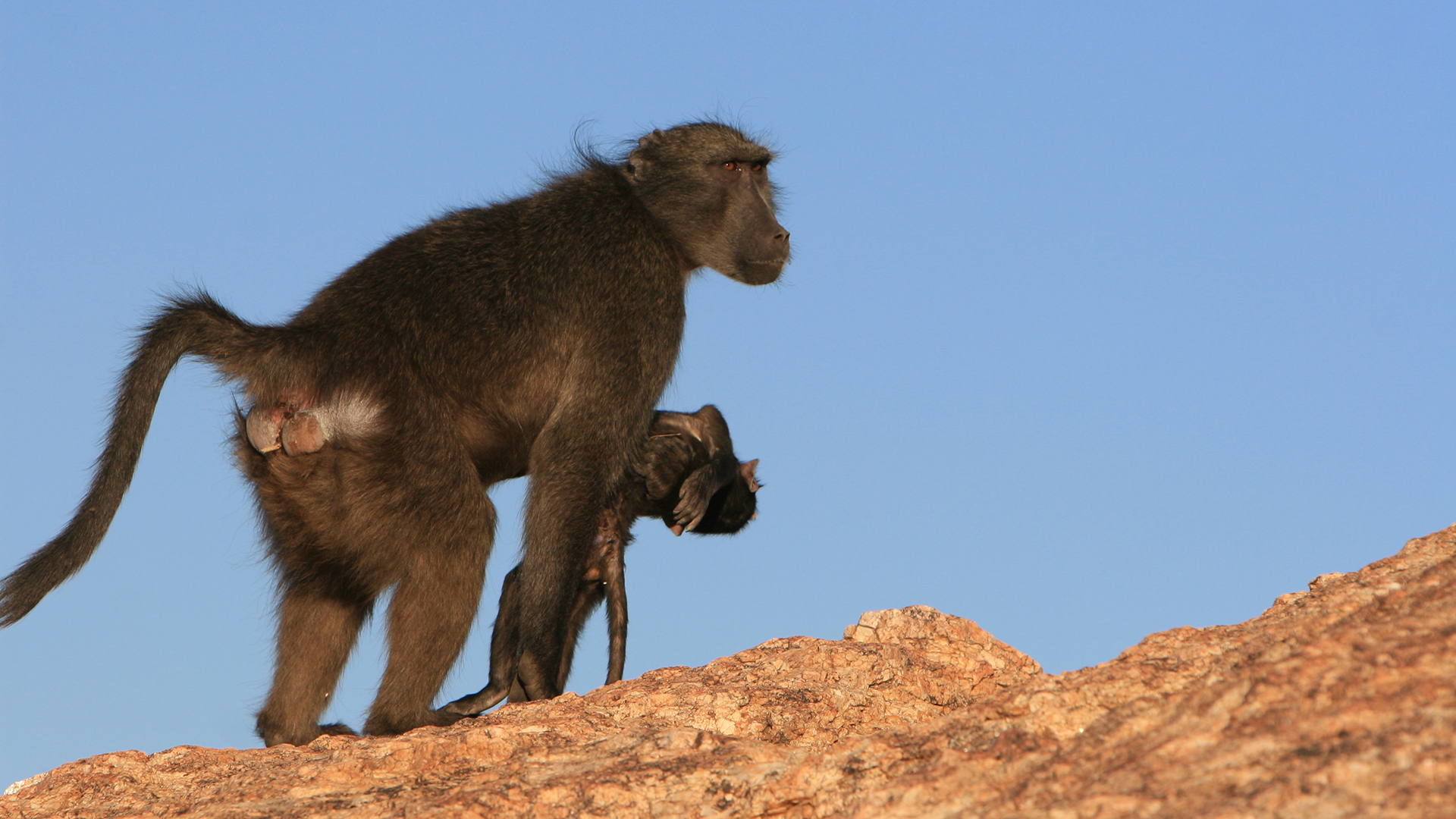Why do primates carry around dead infants?
Hundreds of such cases have been documented across primate species.

Sometimes when ape or monkey infants die, their mothers continue to groom and hold the tiny corpses for days, weeks or months, even as the babies' bodies decay or become mummified. That distressing behavior is more widespread than previously thought, a new study finds.
Researchers recently conducted the first analysis to compare more than 400 documented cases of primate mothers interacting with their dead infants, collecting examples from more than a century of observations covering 50 primate species. The scientists then created "the largest database of primate mothers' responses to their infants' death," they wrote in a new study.
They also discovered that factors such as the mother's and infant's ages, and the suddenness of the youngster's death could shape a mother's actions toward her infant after it died.
Related: In photos: Macaque mother cares for mummified corpse of daughter
Scientists have published descriptions of infant corpse-carrying in primates since the early 20th century; one of the first accounts dates to 1915, appearing in the Journal of Animal Behavior, said lead study author Elisa Fernández-Fueyo, a primatologist and graduate student in the Department of Anthropology at the University College London (UCL) in the United Kingdom.
In the 1915 study, primatologist and psychologist Robert Yerkes "reported the case of a captive rhesus macaque mother who carried her dead infant for five weeks," and he suggested in the study that the mother's behavior was a manifestation of maternal instinct, Fernández-Fueyo told Live Science in an email.
For the new study, the authors analyzed reports dating from 1915 to 2020 of monkeys, apes, bushbabies and lemurs that tended to their deceased young. Roughly 80% of the species they reviewed performed corpse-carrying behavior. However, this activity was most frequently reported in great apes — our closest primate relatives — and Old World monkeys. Both of those primate groups "also carry their infants after death for the longest durations," Fernández-Fueyo said.
Sign up for the Live Science daily newsletter now
Get the world’s most fascinating discoveries delivered straight to your inbox.
For example, in March 2020, researchers described 12 cases of baboon mothers in the wild carrying their dead babies for as long as 10 days. In 2017, a female macaque (a genus of Old World monkey) in an Italian wildlife park carried her dead infant for four weeks, eventually cannibalizing the mummified corpse. And in 2003, after two infant chimpanzees died of respiratory ailments, their mothers carried the babies' corpses for months, Live Science previously reported.
Expressing grief
Lemurs, which diverged from other primate groups more than 60 million years ago, were an exception in the new analysis, and they did not carry deceased infants, Fernández-Fueyo said. However, lemur mothers "were still found to express grief through other behaviors, such as returning to the corpse or giving mother-infant contact calls," Fernández-Fueyo said.
In the species that were reluctant to give up their dead infants, corpse-carrying may occur because the cause of the baby's death isn't visibly obvious (for example, when the baby dies from an illness, rather than from traumatic injury), or when the mother is young and has less direct experience with death than an older female might have, according to the study.
And the length of time that females carried the corpses could indicate the strength of the emotional connection between mother and infant, the authors suggested.
"It is known that the mother-infant bond is regulated by emotions in primates — for example, mother separation from live infants causes anxiety in the mother," Fernández-Fueyo said. In other words, separation anxiety could be a trigger for infant corpse-carrying in primates, and it could explain why the corpses of very young, unweaned infants were typically carried for longer than older babies were, the scientists reported.
In fact, some primate mothers that carried their dead babies would give alarm calls — a sign of stress — if they lost the corpse or if it was taken from them, "suggesting that carrying the corpse may be a way of coping with the stress related with the loss," Fernández-Fueyo said. "More data is needed to further develop our understanding of this, and of how much primate behaviors relating to death may not only be explained by bonds but also by the associated emotions — and, thus, resemble human grief."
The findings were published Sept. 15 in the journal Proceedings of the Royal Society B: Biological Sciences.
Originally published on Live Science.

Mindy Weisberger is an editor at Scholastic and a former Live Science channel editor and senior writer. She has reported on general science, covering climate change, paleontology, biology and space. Mindy studied film at Columbia University; prior to Live Science she produced, wrote and directed media for the American Museum of Natural History in New York City. Her videos about dinosaurs, astrophysics, biodiversity and evolution appear in museums and science centers worldwide, earning awards such as the CINE Golden Eagle and the Communicator Award of Excellence. Her writing has also appeared in Scientific American, The Washington Post and How It Works Magazine. Her book "Rise of the Zombie Bugs: The Surprising Science of Parasitic Mind Control" will be published in spring 2025 by Johns Hopkins University Press.










